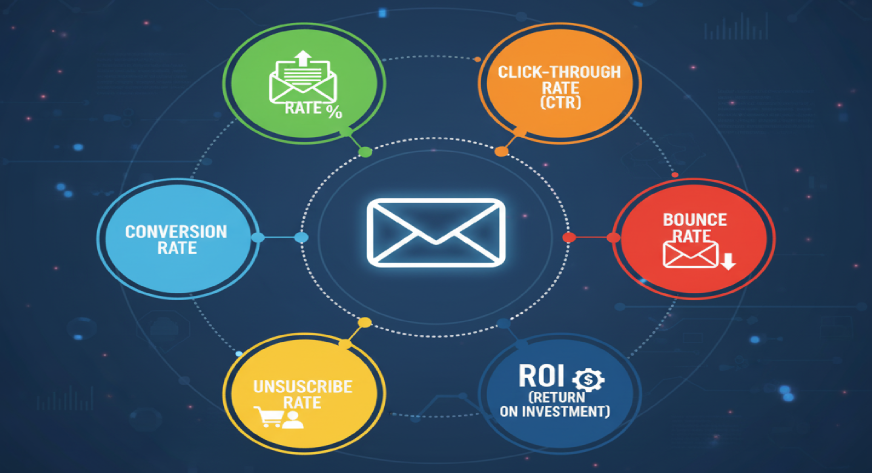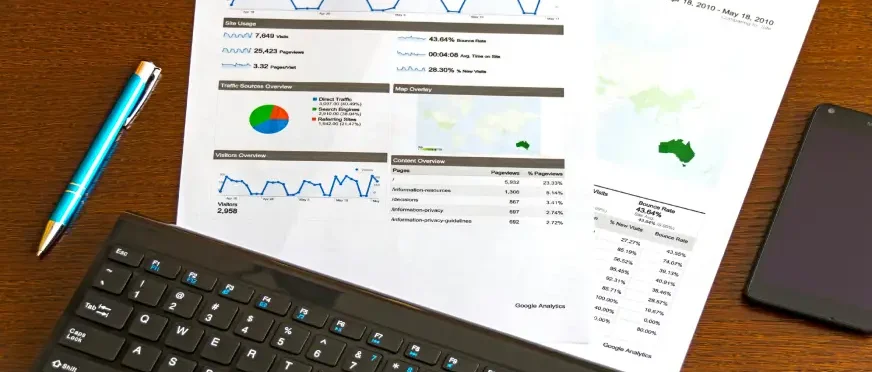Running an email marketing campaign is more than just hitting “send.” The real value comes from understanding how your emails perform, and that’s where Email Marketing KPIs come in. KPIs, or Key Performance Indicators, give you measurable insights into what’s working and what needs improvement. By tracking metrics like open rates, click-through rates, and conversions, you can make informed decisions to refine your campaigns, reach the right audience, and get better results. Knowing how to analyze these KPIs can turn ordinary campaigns into highly effective ones, helping you save time and boost ROI.
Let’s read further.
What Are Email Marketing KPIs?
Email Marketing KPIs are measurable metrics that show how well your campaigns are performing. They help you understand if your emails are engaging your audience, driving traffic, or generating sales. Instead of guessing what works, KPIs give you clear, actionable data.
Some common KPIs include:
- Open Rate: Percentage of recipients who open your email.
- Click-Through Rate (CTR): Percentage of recipients who click on links in your email.
- Conversion Rate: Percentage of people who complete a desired action, like making a purchase or signing up.
- Bounce Rate: Percentage of emails that weren’t delivered.
- Unsubscribe Rate: Percentage of people who opt out from your list.
Also Read, Email Marketing Strategies That Actually Convert in 2025
Key KPIs To Track of Email Marketing

1. Open Rate
The open rate shows how many people actually opened your email. It’s a good indicator of how compelling your subject line is. For example, if only 15% of recipients open your email, it may be time to test new subject lines or adjust sending times.
2. Click-Through Rate (CTR)
CTR measures engagement by showing how many recipients clicked on links within your email. If your open rates are high but CTR is low, your content or call-to-action may need improvement. For instance, changing a generic “Learn More” button to “Grab Your Discount Now” can increase clicks.
3. Conversion Rate
The conversion rate shows how many recipients took the desired action, such as purchasing a product or signing up for a webinar. Tracking conversions helps you see which emails directly impact your goals. A/B testing different offers or layouts can help improve this metric.
4. Bounce Rate
A high bounce rate indicates that many emails aren’t reaching recipients, often due to invalid addresses or server issues. Regularly cleaning your email list can reduce bounce rates and improve overall deliverability.
5. Unsubscribe Rate
The unsubscribe rate shows if your emails are relevant and engaging. If too many people opt out, it’s a sign to revisit your content, frequency, or targeting strategy.
How To Analyze Email Marketing KPIs?
Analyzing your Email Marketing KPIs is about more than just reading numbers, it’s about understanding what they tell you about your audience and your campaign.
- Use the Right Tools: Platforms like Mailchimp, HubSpot, and Sendinblue provide built-in analytics to track performance.
- Compare Campaigns: Look at historical data to identify trends. Which subject lines, offers, or sending times performed best?
- Segment Your Audience: Breaking down data by demographics, past purchases, or engagement levels helps identify which groups respond best.
- Visualize Your Data: Charts and graphs make it easier to see patterns and make informed decisions. For example, a spike in CTR during weekends might suggest your audience is more active then.
Tips for Improving Email Marketing Campaign Performance
- Optimize Subject Lines: Catchy and relevant subject lines increase open rates. Personalization, like including the recipient’s name, can make a big difference.
- A/B Testing: Test different email versions, subject lines, CTAs, images—to see what resonates most.
- Clean Your Email List: Remove inactive or invalid addresses to reduce bounce rates and improve deliverability.
- Personalize Content: Tailor emails based on user behavior or preferences to increase engagement and conversions.
- Monitor Frequency: Avoid overwhelming subscribers; find the right balance to keep your audience engaged without fatigue.
Final Thoughts
Understanding and analyzing Email Marketing KPIs is key to running successful campaigns. Metrics like open rates, CTR, conversion rates, bounce rates, and unsubscribe rates provide valuable insights into audience behavior and campaign performance. Regularly reviewing these KPIs helps you refine content, improve engagement, and achieve your marketing goals more effectively.
Managing email campaigns can be time-consuming, especially when you want consistent results. Webworks Co. offers digital marketing services that simplify campaign planning, execution, and analysis, helping your emails reach the right audience and deliver measurable results without the stress.




